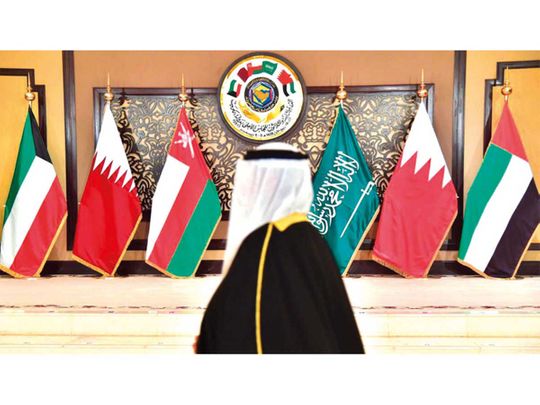
Economies that have been facing successive global crises have done so in different ways and with varying capacities, which have led to successful adaptation for some while others continued to suffer. Even worse is when nations are forced into bankruptcy, much as the Sri Lankan government did over its inability to pay dues, including for purchases of fuel needs. It has in turn led the country to return to rudimentary means of transportation.
What about the GCC economies? What is their position among these nations in handling periodic economic crises ravaging the world? Although there is some disparity in the position of the GCC economies, based on available data they have been shining examples amid the darkness and uncertainty surrounding prospects for the global economy.
What applies to many of the economies of other countries, including those with whom the GCC shares monetary policies such as the US, or those with which it has strong trade relations such as the EU - does not necessarily apply to the Gulf states. This is simply because the GCC economies have their own ways that they put into practice. This is why a copy-paste approach in this situation is a grave mistake.
Spectre of rampant inflation
The high inflation rates in the West are among the key factors that have contributed to the current crises experienced by these powerful economies. The West has not seen such high inflation rates for 40 years, with inflation flaring around the 10 per cent level. The prospects for the future remain unclear despite efforts by these countries to get inflation under control, such as increasing interest rates.
On this important aspect, inflation rates in the GCC are the lowest in the world, centered around 4 per cent, thereby helping cope with the recent rise in prices of some goods. The price and inflation rises are still within reasonable ranges when compared to levels in other regions. In conjunction with this, many economies, particularly the EU ones, are threatened with negative- or low growth rates of 1 per cent at best this year, as inflation impacts deep on actual growth.
Optimal growth chances
In contrast, the GCC countries will achieve growth rates of 5.5-7.5 per cent this year. In the UAE, the Central Bank expects the economy to achieve growth of 5.4 per cent, while the IMF in its report released last week rates the Saudi economy as growing by 7.6 per cent this year. Growth chances of the rest of the GCC countries are within this range, which is among the highest globally.
Although much of this growth is due to oil price gains, non-oil sectors have also achieved optimum numbers. According to the IMF report, the non-oil sector growth will be at 4.2 per cent.
As inflation and growth rates are linked, the GCC economies are not vulnerable to stagnation at all. Considering inflation rates, real growth will range in the 2-3.5 per cent range, unlike Western economies that are poised to enter a phase of stagnation or stagflation.
For the GCC, stagnation or stagflation is totally excluded because inflation rate gains are under control and there is no negative growth for these economies. All of this means the most important factors leading up to stagflation are not present in the GCC. Of course, there are fears of a global recession that will keep affecting oil prices and consequently have ramifications on GCC economies. Even here, the distinctive economic position taken by Gulf states will still be in play and contribute to maintaining the status quo.








